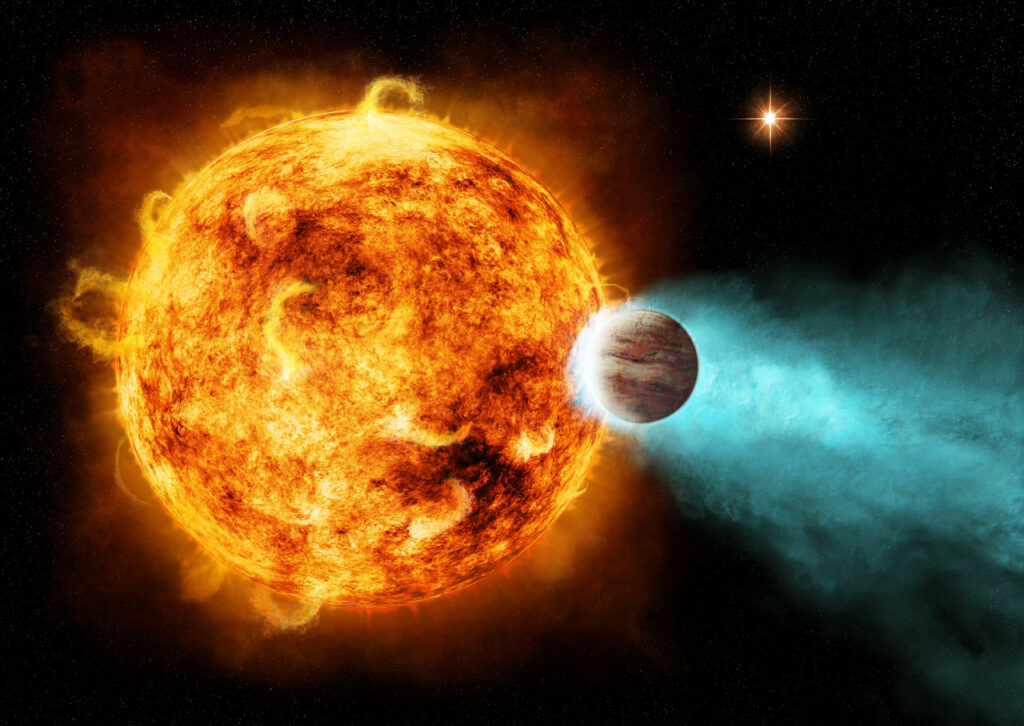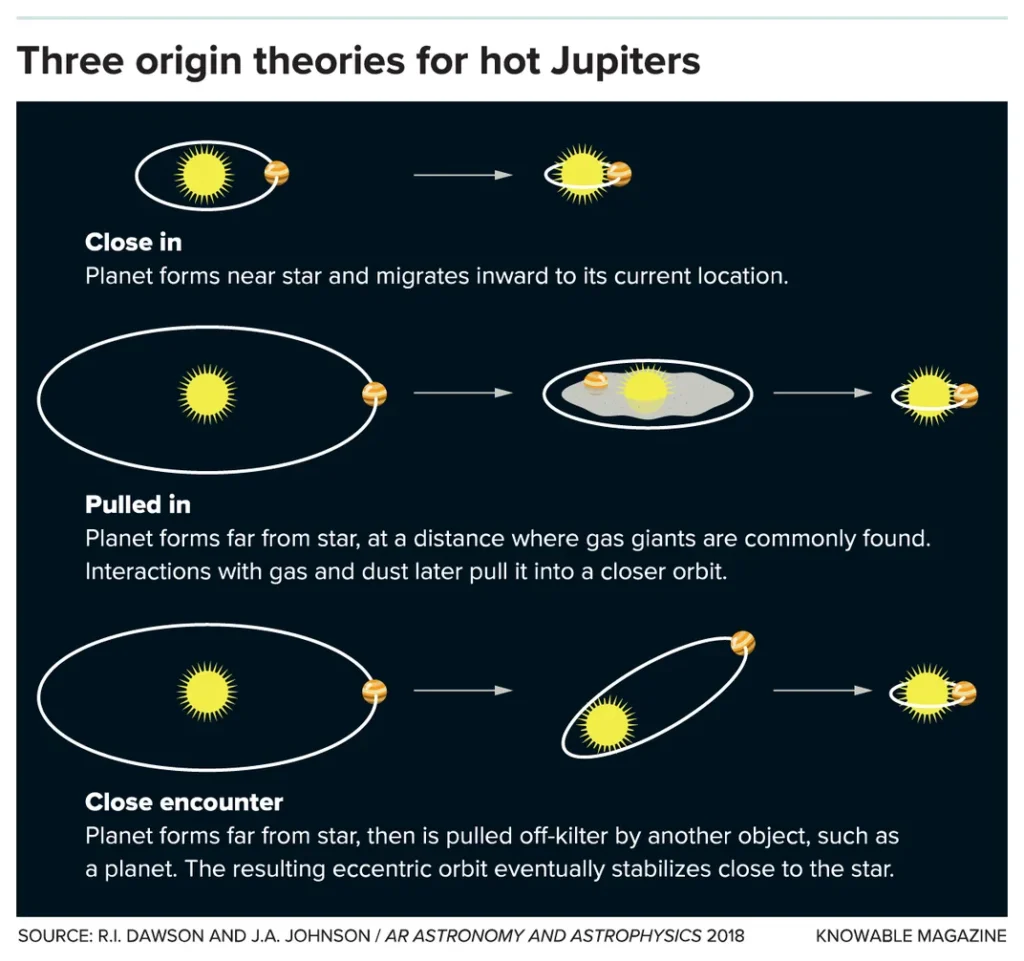What is Hot Jupiter? A Planet Transforms into a Hot Jupiter.
What is Hot Jupiter?
Hot Jupiters, also known as hot Saturns, are a class of gas giant exoplanets with very short orbital periods that are thought to be physically comparable to Jupiter. They are colloquially referred to as “hot Jupiters” due to their near proximity to stars and high surface-atmosphere temperatures. recently a A rare planet with an odd orbit around the sun has been found by astronomers. It orbits the star in an elliptical pattern, at times traveling very far away and at other times approaching very close.

Hot Jupiters, also known as hot Saturns, are a class of gas giant exoplanets with very short orbital periods that are thought to be physically comparable to Jupiter.
This results in notable temperature fluctuations, with periods being severely cold and others quite hot. Scientists think that what they are witnessing may be a different kind of reality. The name of this planet is TIC 241249530 b.
In this article, we will focus in details about What is Hot Jupiter? , What makes Jupiter hot?, how they are found, the distance from our earth, etc.
Approximately 1100 light-years from Earth, this exoplanet circles a star. The planet revolves around the primary star, whereas the primary star revolves around the other star, since the star is one of a binary pair. This planet has the potential to become a “hot Jupiter” because of its interaction with two stars, according to a study that was published in the journal Nature on Wednesday. Approximately 300 to 500 of the nearly 5,600 exoplanets that astronomers have found are “hot Jupiters.”
The planet is getting closer to its star.
Because these planets are enormous gas giants like Jupiter, they are known as hot Jupiters. They are heated to extreme temperatures by the tight orbits of their stars. Jupiter needs roughly 4000 Earth days to complete one orbit around the Sun in our solar system. Hot Jupiters, on the other hand, take only a few days to complete an orbit around their sun. Large planets, according to scientific theory, begin their orbits far from their stars and eventually approach them. They are wondering how these giant planets, which are much closer to their stars than Mercury is to our Sun, could have ended up there.
Please follow our website

“Hot Jupiter,” a massive gaseous planet resembling Jupiter that is orbiting very near its parent star.
Planet Five Times Bigger Than Jupiter
This planet was identified in 2020 by NASA’s exoplanet-hunting spacecraft, TESS. TESS observed something pass in front of the host star TIC 241249530 on January 12, 2020. TESS finds starlight dips that suggest the existence of an exoplanet. The planet’s existence was further supported by radial velocity measurements, which also revealed that it was roughly five times as massive as Jupiter.
Are hot Jupiters rare?
Exoplanets known as “Hot Jupiters” are the rarest in our galaxy, but they are also among the easiest to locate around distant stars. Although hot Jupiters orbit extremely near their host stars—often even closer than Mercury does to our sun—they have masses that are equal to or greater than those of our own Jupiter.
Are hot Jupiters habitable?
Hot Jupiters are the simplest exoplanets to find and observe of all the planets found so far. Despite the impossibility of life on these planets, their harsh environs and equally intriguing but unknown origins make them appealing nonetheless.
How old is Jupiter?
While most known hot Jupiters are well over a billion years old, this one is probably only a few million years younger because it circles a well-studied star that is roughly 17 million years old. The star, which has a mass comparable to the Sun’s, takes the planet around seven days to orbit.
What do hot Jupiters tell us?
Astronomers are learning more about the construction and evolution of planets by examining hot Jupiters, which are very different from the gas giants that orbit our sun slowly. This knowledge is vital to the hunt for rocky, Earth-like exoplanets that might harbor life.
What would a hot Jupiter look like?
At dawn and sunset, the planet emits a beacon-like glow due to its highly reflective clouds. Our solar system would seem to have the perfect morning star if it contained a “hot Jupiter,” a massive gaseous planet resembling Jupiter that is orbiting very near its parent star.




